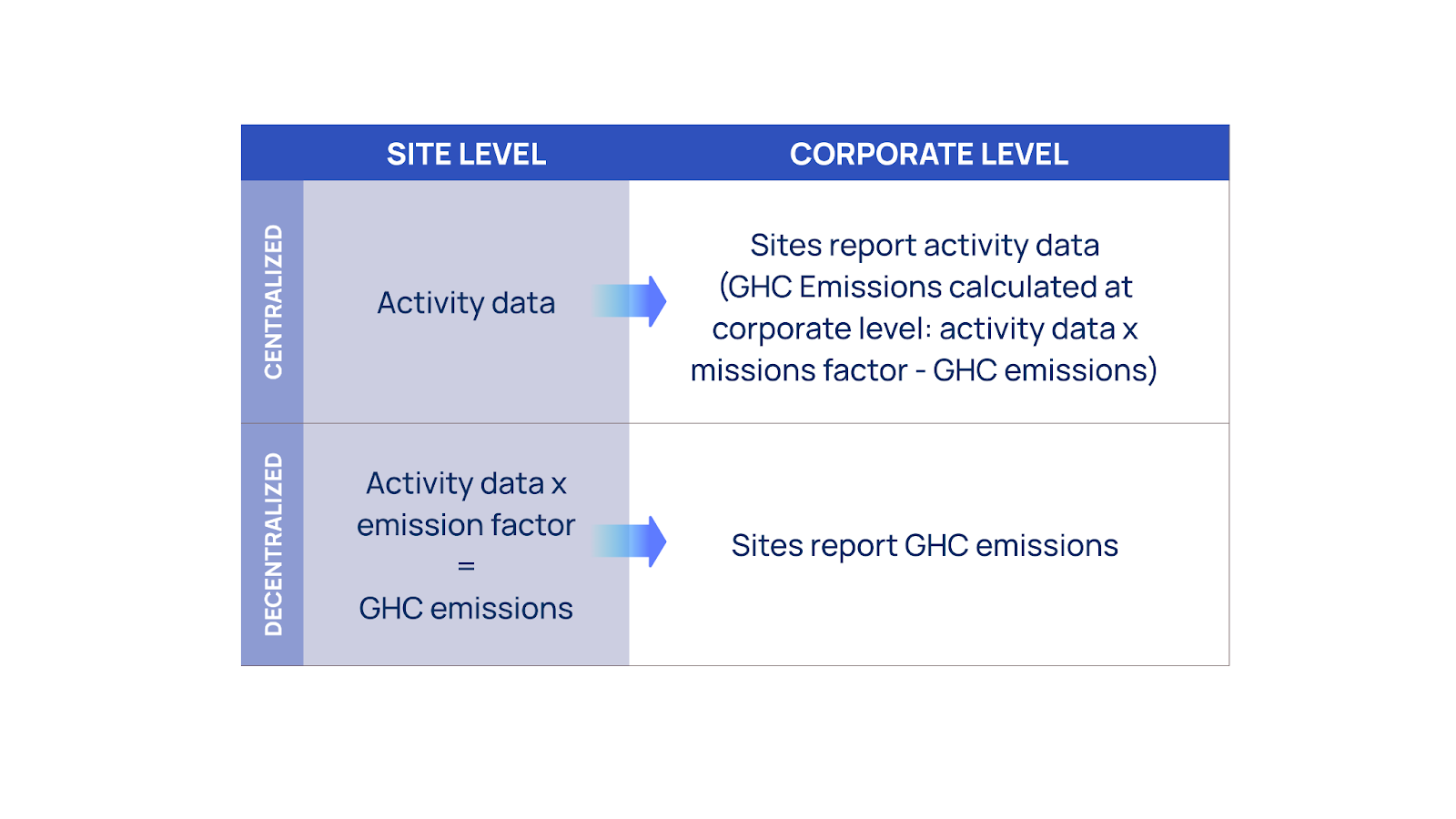The GHG Protocol and CBAM: Data Collection & Inventory Development
By Glassdome
In our overview, we covered the basics of what the Greenhouse Gas (GHG) Protocol and Carbon Border Adjustment Mechanism (CBAM) are. Now it’s time to dive into the details, starting with how you need to collect and catalog your data.
GHG Protocol
The GHG Protocol allows companies to use either a centralized or a decentralized data collection approach. In a centralized approach, facilities report their activity data and a reporting company calculates their emissions together. In a decentralized approach, individual facilities independently compute their GHG emissions.

Source: GHG Protocol – A Corporate Accounting and Reporting Standard
Data collection scope varies between the two methodologies because they cover different spectrums of emissions reporting (see Figure 2).
Figure 3 covers the data you’ll need to develop an inventory under the GHG Protocol.

Source: GHG Protocol
Figure 3. Scope of data collection under the GHG Protocol.
The United States Environmental Protection Agency has developed some helpful resources that can be used to create an inventory for the GHG Protocol:
CBAM
CBAM’s data collection guidelines are tightly focused on a specific subset of Scope 1, 2, and 3 data (as seen in Figure 4).

Source: European Commission
***Note, as the CBAM regulation is in the transitional phase, the key considerations within its scope may differ from what they will be once CBAM is fully integrated.
Figure 4. Scope of data collection under the CBAM.
CBAM is focused on a specific set of goods imported into the EU: cement, iron and steel, fertilizer, aluminum, electricity, and hydrogen. The key difference between the two methodologies is that CBAM is not focused on determining GHG emissions at the corporate level, but rather at the product level.
Below is a guidance document that can be used to develop an inventory of relevant goods covered under CBAM in the transitional phase.
Next Steps
Knowing what you have is only half of the story (and our Product Carbon Footprint platform can help with both sides). Up next, learn how to understand and publish that data in our Emissions Calculation & Reporting insight.
Starting to think you need software that’ll help you through data collection and reporting?
Check out Glassdome’s emissions tracking solutions.


